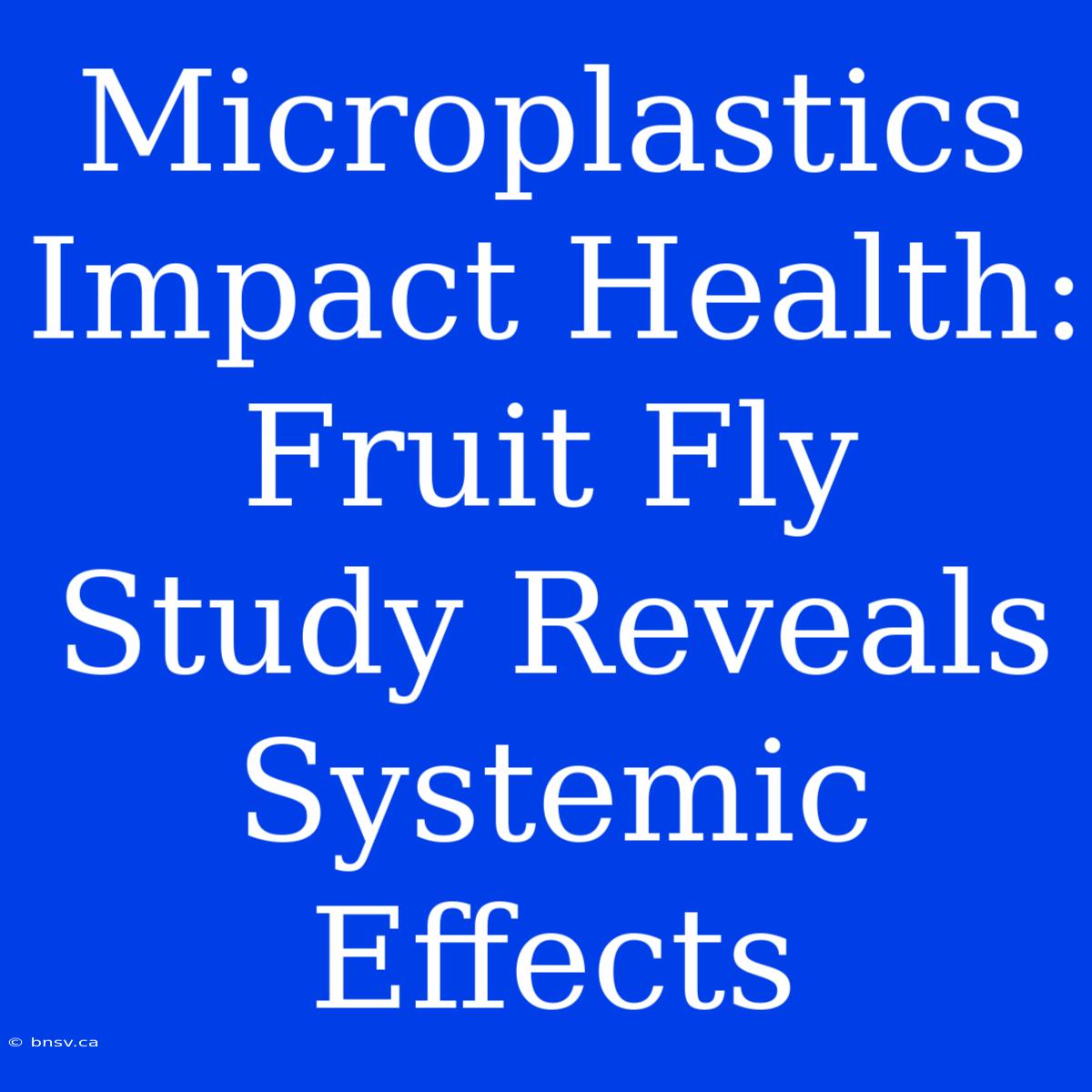Microplastics Impact Health: Fruit Fly Study Reveals Systemic Effects
Is Microplastic Contamination a Silent Threat to Our Health? A new study on fruit flies sheds light on the alarming systemic effects of microplastics, raising concerns about their potential impact on human health.
Editor Note: This article explores the groundbreaking findings of a recent study on microplastics' impact on fruit flies. The study highlights the systemic nature of microplastics' effects and raises critical questions about their potential implications for human health.
Analysis: This study, published in Environmental Science & Technology, investigated the effects of microplastics on fruit flies, a widely used model organism in biological research. Researchers exposed fruit flies to polystyrene microplastics at various concentrations and observed significant alterations in their physiology and behavior.
Microplastics: A Growing Environmental Concern
Microplastics, tiny plastic particles less than 5 millimeters in diameter, are ubiquitous in the environment, contaminating our oceans, soil, and food sources. While their impact on human health is still under investigation, evidence suggests potential risks, including:
- Impaired Immune Function: Microplastics can trigger inflammation and disrupt immune responses, potentially increasing susceptibility to infections.
- Hormonal Disruption: Some microplastics mimic hormones, leading to endocrine disruption, which can interfere with reproduction and development.
- Cellular Damage: Microplastics can accumulate in cells and tissues, causing oxidative stress and cell death.
Fruit Fly Study: Revealing Systemic Effects
The fruit fly study revealed a range of adverse effects:
- Reduced Lifespan: Flies exposed to microplastics exhibited a shortened lifespan compared to controls.
- Altered Metabolism: Microplastic exposure led to changes in carbohydrate and lipid metabolism, potentially contributing to metabolic diseases.
- Neurological Impacts: Microplastics affected the flies' locomotor activity and learning ability, suggesting potential impacts on brain function.
- Reproduction Issues: Exposure to microplastics also resulted in reduced fecundity and altered egg development.
Microplastics: A Multifaceted Threat
The study's findings highlight the systemic nature of microplastics' effects, impacting various physiological processes in the fruit flies. This raises concerns about the potential implications for human health, as microplastics are now a common contaminant in our food and environment.
Further Research is Crucial
While the fruit fly model provides valuable insights, further research is needed to understand the specific mechanisms by which microplastics impact human health. This research should focus on:
- Identifying specific microplastic types and their effects.
- Investigating the long-term effects of chronic microplastic exposure.
- Exploring potential interventions to mitigate microplastic-related health risks.
FAQs
Q: How do microplastics enter our bodies?
A: Microplastics can enter our bodies through ingestion of contaminated food and water, inhalation of airborne particles, and skin absorption.
Q: What are the health risks associated with microplastics?
A: The health risks associated with microplastics are still under investigation, but potential risks include impaired immune function, hormonal disruption, cellular damage, and inflammation.
Q: What can we do to reduce microplastic exposure?
A: We can reduce microplastic exposure by choosing reusable items over single-use plastics, avoiding products containing microbeads, and supporting policies aimed at reducing plastic waste.
Tips to Reduce Microplastic Exposure
- Choose reusable alternatives: Opt for reusable bags, water bottles, and food containers to reduce plastic consumption.
- Avoid microbead products: Select personal care products that are free of microbeads, which are tiny plastic particles found in scrubs and toothpaste.
- Wash your clothes properly: Microplastics can be released during washing, so wash synthetic clothes less frequently and choose eco-friendly detergents.
- Filter your water: Consider using a water filter to remove microplastics from your drinking water.
- Support responsible plastic management: Advocate for policies aimed at reducing plastic waste and promoting responsible plastic recycling.
Summary: The study on fruit flies highlights the alarming effects of microplastics on living organisms, suggesting potential implications for human health. This research emphasizes the need for further investigation into the mechanisms and risks associated with microplastic exposure.
Closing Message: Microplastics are a pervasive environmental threat that warrants urgent attention. By understanding their impact and promoting responsible plastic management, we can protect our health and the environment for generations to come.

